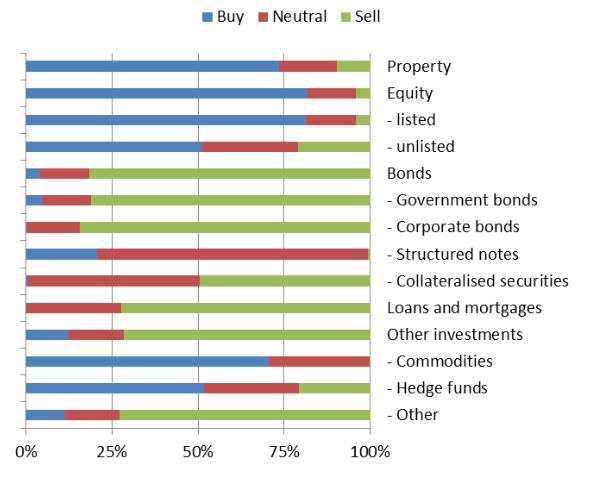What happens when the next market crash hits?
If one asked pensions across Europe—as the European Insurance and Occupational Pensions Authority (EIOPA) did last year—they would likely state their intention to rebalance in favor of the assets that have fallen in price.
But analysis of investor behavior during the financial crisis showed that the real track record was less sensible. Many pensions would likely join an immediate sell-off regardless of longer term perceived benefits of rebalancing.
“Further work needs to be done to analyze how prolonged adverse market conditions will affect the sponsors’ behavior and the possible consequences for financial stability and the real economy.”EIOPA surveyed 140 defined benefit (DB) or hybrid pension funds from 19 European countries as part of a “stress test” for the sector. Unlike similar initiatives for banks, the test was not designed for participants to pass or fail.
The pensions were asked to layout their reactions to three scenarios, two of which involved market sell-offs, and one of which involved an unexpected spike in longevity.
Actuaries can relax: DB funds “demonstrated a relative resilience” when tackling a 20% fall in mortality rates.
In “Adverse Scenario 1”—the most similar to the 2008 market crash with falling asset prices, interest rates, and inflation—the majority of pensions said they would buy into equities, property, and alternatives or maintain their positions. More than a quarter of respondents said they would sell fixed-income assets.
 How European DB funds would respond to a market sell-off. Weighted by assets. Source: EIOPA.Weighting respondents by asset size magnified the effect. Large Dutch investors were particularly adamant that they would
rotate out of fixed income and into equities during a sell-off, in an effort to
benefit from a market rebound, EIOPA said.
How European DB funds would respond to a market sell-off. Weighted by assets. Source: EIOPA.Weighting respondents by asset size magnified the effect. Large Dutch investors were particularly adamant that they would
rotate out of fixed income and into equities during a sell-off, in an effort to
benefit from a market rebound, EIOPA said.
However, EIOPA’s analysis of behavior in 2008 indicated that many pensions did otherwise.
“The analysis of the 2008 data indicates that a full rebalancing of investment portfolios may not be realistic,” EIOPA’s full report said. “The sample of [pensions] moderately re-balanced investment portfolios by buying equities during the financial crisis. This means that investment behavior was on aggregate counter-cyclical, but to a lesser degree than indicated… through the stress test questionnaire.”
EIOPA admitted there were few firm conclusions to be drawn from the analysis: there were likely to be “a variety of responses” from investors, dependent on their individual funding concerns, the strength of corporate sponsors, and local economic conditions.
Andrew Vaughan, partner at consulting firm Barnett Waddingham, said UK pensions should have enough flexibility to address the risks identified by EIOPA’s report “without dangerous knee-jerk reactions.”
“Allowing appropriate recovery plans is key and we would hope EIOPA recognizes this in any future advice to the European Commission,” Vaughan said.
EIOPA Chairman Gabriel Bernardino said that the research had “deepened the supervisors’ understanding of the impact that different future stress scenarios can have on the pension plans’ resilience.”
“Further work needs to be done to analyze how prolonged adverse market conditions will affect the sponsors’ behavior and the possible consequences for financial stability and the real economy,” he added.
Related:The Psychology of a Sell-Off & What Would a Cure for Cancer Do to Your Liabilities?
